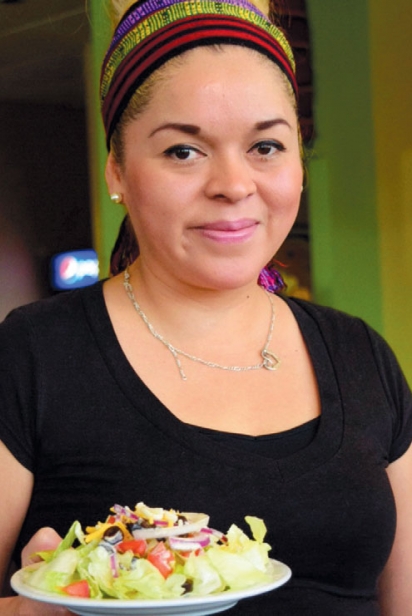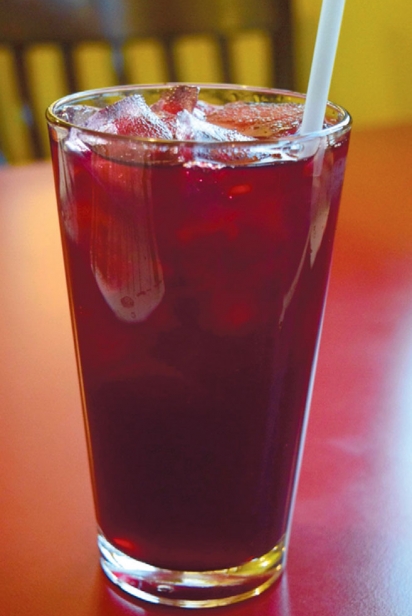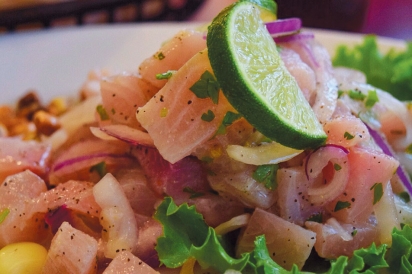I Say Potato, You Say Papa
Peruvian restaurants bring specialty ingredients to Idaho
While Idaho may be famous for potatoes, Peru is the motherland, the evolutionary epicenter of potatoes. And though Idaho is known as the bastion of the Russet Burbank, Peru is home to more than 3,000 ancient varieties—everything from gumball-sized blue orbs to egg-yolk-yellow lumps. And this remarkable diversity is one of the defining aspects of Peruvian cuisine.
“In Peru, everything is potato,” said Deysi Contreras, chef at Lima Limon, a brightly hued Peruvian restaurant hovering on the outskirts of downtown Kuna. “One potato is special for the mashed potato. And one is special for French fries. And one is yellow, almost close to yellow zucchini in color; it’s for chicken soup.”
For the classic Peruvian dish Papa a la Huancaina, potatoes are boiled, chilled and bathed in a creamy Aji Amarillo sauce thickened with queso fresco and saltine crackers. And for the popular Pollo a la Brasa—rotisserie chicken marinated in rosemary, dark beer, cumin and garlic—spuds are served in the form of crisp French fries.
Deysi and her Mexican husband, Agustin Contreras, opened Lima Limon in August 2014. Prior to that, Agustin managed nearby El Gallo Giro for 12 years.
“I married a Peruvian so I was enjoying, all those years, the cooking at home,” said Agustin. “I wanted to share with people those flavors because there’s no place to find them in Idaho.”
To replicate those distinctive Peruvian flavors, Agustin and Deysi had to find a way to source specific ingredients integral to the cuisine.
“In Idaho, it’s hard to find ingredients,” said Agustin. “What we do is I have a friend in California, that’s the way that I get it. He orders and then it comes on a ship in San Francisco. Everything comes from Peru, it’s not like they make it here.”
Lima Limon’s products come from a company called Mi Peru, which sells dried and frozen Peruvian foodstuffs—everything from Maíz Mote, a meaty, large-kernel corn related to hominy; to Ulluco, an orange-ish tuber that has the texture of a boiled peanut; to Huacatay, Peruvian black mint. And while these items are all essential to capturing the edible essence of Peru, none are more important, apart from potatoes, than authentic Peruvian peppers.
“We use Aji Panca, Aji Rocoto, Aji Amarillo and Aji Limo,” said Agustin. “Those are Peruvian peppers. There’s no way to get it here and we don’t want to be like, ‘Oh, this other local pepper is similar.’ Peruvians, they find this real. It’s not like something we tried to imitate.”
For Lima Limon’s vibrant ceviche de pescado, for example, Deysi marinates fresh tilapia in lime juice, red onion slivers, cilantro and Aji Limo, a spicy, aromatic Peruvian pepper with a limey bite. And for the classic Aji de Gallina, she covers shredded chicken breast in a creamy, curry-like sauce made with Aji Amarillo, a spicy orange pepper that’s the soul of many Peruvian dishes.
Amigos Mexican Restaurant in Boise is also bringing Peruvian flavors to the region. In April, Peruvian owner Gil Portocarrero hired Mexican Chef Ines Zarate, who has more than 15 years experience cooking Peruvian fare in San Francisco. Wednesdays through Saturdays from 5 to 9pm, Amigos serves dishes like fresh Ceviche, Lomo Saltado and Arroz con Mariscos, a heap of rice lacquered in a bright red pepper sauce with mussel shells and shrimp tails poking out.
But Portocarrero said he had to drive all the way to San Francisco to pick up his specialty Peruvian ingredients—everything from the intensely spicy Aji Rocoto peppers he serves with the ceviche, to the Maiz Morado, or Peruvian purple corn, he uses to make chicha morada, a sweet non-alcoholic drink spiced with cinnamon and cloves.
“I have to be honest: Here in Boise it’s really hard for me to find whatever I need to make Peruvian dishes. … The only place I can find it kind of close is Utah and San Francisco and Florida,” said Portocarrero.
But other Peruvian ingredients are easier to find around these parts. Scan the menu at Lima Limon—letting the lilt of a double “l” and the purr of a rolled “r” ricochet around your mouth as you sound out the Spanish words—and you’ll notice some seemingly out-of-place dishes. Tallarines Verdes, green pesto spaghetti, and Lomo Saltado, steak strips stir-fried in soy sauce and served with white rice, are two prime examples.
“There’s a lot of people from different countries in Peru,” explained Deysi. “That’s why there’s so many different flavors.”
Over the centuries, Peru has seen waves of immigration from around the world. Africans introduced yams and peanuts, the Chinese brought soy sauce and rice, the Japanese brought a love of raw fish (seen in dishes like tiradito) and the Italians brought pasta and a passion for grappa, or grape brandy, also known as pisco in Peru.
The spirit is the base of the wildly popular Pisco Sour, a frothy cocktail that includes egg white, lime juice, bitters and Jarabe de Goma.
“Jarabe de Goma is sugar water that also helps to make foam on the drink,” said Agustin. “Then we add the lime juice and not too much ice. You’ll see it’s very fine, not like a blended margarita.”
And he’s not bluffing. Lima Limon’s Pisco Sour is an artfully balanced, blended affair—with an icy egg white head concealing a touch of sweet, a bite of bitter, a zip of lime and a light boozy burn. It’s the perfect cooling, cleansing counterpoint to all those rich potatoes and sizzling Peruvian peppers.
Tara Morgan is a freelance food and booze writer. She’s the Boise Weekly’s roving food writer, editor at Edible Idaho and founded the website Boise Feed. She also runs a catering and events company, Wild Plum Events & Eats, with her husband.







